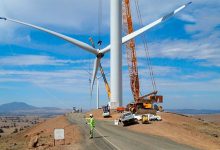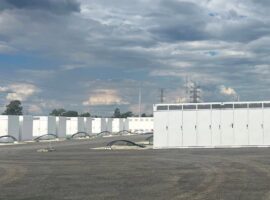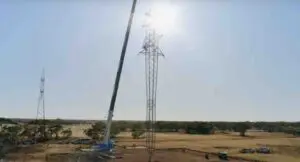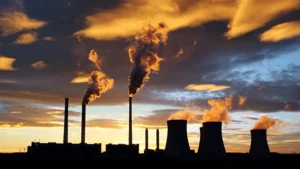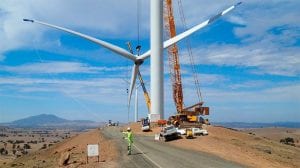On December 20, 2024, The Senate Select Committee on Energy Planning and Regulation in Australia tabled its final report revealing critical weaknesses in the governance, planning, and economic efficiency of Australia’s energy market.
The Committee sought evidence to test if the energy system is being planned and governed in such a way to promote efficient investment in the transition to decarbonised electricity generation at the same time as maintaining price, quality, safety and reliability in the long-term interests of consumers.
Despite the very tight time limit it was given, intense expert interest and participation in the Inquiry allowed a detailed examination of one of the most complicated engines of our economy. An engine that is currently simultaneously the largest contributor to our nation’s productivity and to our carbon emissions.
The electricity sector accounts for about 30 per cent of our nation’s carbon emissions, the highest of all industrial sectors. Interestingly, while still complex and requiring enormous amounts of capital, the energy sector also presents one of the most straight forward opportunities for substantial emissions reductions.
The immense effort and investment required to transition to clean energy needs the highest levels of governance to ensure Australians can have confidence in the planning and regulation guiding the decarbonisation of our energy system which will be the cornerstone to decarbonising our economy more broadly.
The terms of reference for the Inquiry were broad ensuring they offered an opportunity to explore the complex path to decarbonisation in balance with the energy system and its role to adhere to the national electricity objectives, particularly around price reliability and emissions reductions.
The Inquiry revealed that Australia’s National Electricity Market (NEM) has critical weaknesses in the governance, planning and economic efficiency of that energy system. Those weaknesses are historic in origin but what may have been sufficient in a coal fuelled system are completely inadequate for the revolutionary transition we need to achieve.
Instead, it was found that there is simply the mere appearance of governance with no meaningful accountability. This is particularly true of Australian Energy Market Operator (AEMO), the organisation that has been given enormous powers for the energy transition via its biannual Integrated System Plan (ISP).
That gossamer thin veneer of governance gives those charged with the transition just enough cover to maintain the status quo and this is evident in the Government Senators’ dissenting report.
By echoing the myth that true governance exists, Australians are being asked to keep believing that the emperor is wearing rich, robust new robes when in fact he is, in any meaningful way, uncomfortably naked. Governance is not just a word it is a recognised system of checks and balances to ensure what should occur is actually what is being done.
As broadly acknowledged the Inquiry was neither created nor conducted to find fault or score political points, instead it provides an opportunity to catalyse genuine reform.
This was evidenced by the significant number of submissions provided and witnesses appearing in public hearings. Through this, a clear finding emerged that the gossamer thin cloak of governance has led to insufficient accountability which is risking our energy supply, our economy and, very importantly, our mission to decarbonise.
Privately, many in the industry acknowledge the shortfalls and the enormous challenges ahead, however there is little appetite to drive any meaningful reform.
Some in the bureaucracy see the case for reform but while providing frank and fearless advice privately begrudgingly accept the status quo in public. A very minor portion of the energy system is subject to scrutiny via state and federal budgetary processes as well as parliamentary accountability through Senate Estimates and state equivalent scrutiny regimes.
The Inquiry found, however, that it all deserves far greater scrutiny.
The NEM is for the most part not government funded so the normal budgetary and parliamentary measures don’t hold those responsible to account. This is despite all costs in the energy system being passed through to energy consumers who wear both the cost and the risk.
This is made worse by the fact that consumers have no say in the costs they incur, not even via their elected representatives. This is a point wilfully ignored by those who seek to persuade us that the status quo vis-à-vis governance and accountability is appropriate.
Consumers are said to have an implied ‘right’ to electricity’ (as dispatch equals demand) so all costs, ie, energy charges, transmission (including all existing, new development, maintenance and replacement), regulatory, compliance and planning charges, etc. are passed onto them.
Consumers oddly also carry the bulk of risk for all development, even failed or underutilised developments, that market participants choose to build under the ISP.
That is not to say transmission companies don’t carry any risk, as they do, but recent shifts such as discount finance via CEFC and improved financeability via National Electricity Rule (NER) changes assist developers in ways not available to consumers.
As generators have ‘no skin in the game’ there is also no investment signal to develop generation assets where the cost of delivered electricity is lowest (alongside other variables such as resources).
Then perversely Transmission Network Service Providers (TNSPs) are incentivised to build transmission even if those lines are more expensive as they are far away from where the load is. The generator builds without being exposed to the economic cost of transport, the TNSP is economically rewarded and consumers get charged for the total economic cost without consultation or choice.
A significant contributor to this is the open access regime on the NEM which has been the subject of criticism and multiple reviews for over 10 years. The last effort by AEMC was quietly euthanised in late 2024 as, like previous attempts, it was just too hard.
The regime was originally designed to allow new generation and transmission development, instead however, it sends perverse investment signals for the development of generation, storage and transmission. It is this failed signalling that has led to the need for a central planning authority (AEMO) to make transmission augmentation projects ‘actionable’ with the hope they would be built in a timely manner.
It is noteworthy that after four ISPs since 2018 there is little to show for the effort and expense invested by AEMO, market participants and thousands of contributors: expense borne entirely by energy consumers.
If the ISP planning process was an effective tool to ensure our energy system was keeping pace with the rate of change needed to decarbonise the NEM, we would be seeing a lot more progress than we are now. This would be particularly true on the major interconnecting transmission projects that the ISP largely focusses on.
Yet, instead, the ISP has in effect delivered very little of what AEMO has said was required. While they may have started out under different names mega projects such as VNI West, HumeLink and MarinusLink have not even started. Even Project Energy Connect (PEC) has only been built to the South Australian border leaving most of the line yet to be built. Questioning of these projects has got louder and louder as the capital costs and timelines continue to grow exponentially.
While mega-projects of all types have a poor track record on both timeline and budget, current ISP project cost forecasts have blown out to an extent that surely at some point they should be withdrawn or alternatives sought. Instead, each ISP argues the case for them to proceed regardless of whether they still make economic sense.
At some point sense should prevail and alternatives developed. That point may have already been passed but without appropriate oversight and accountability it is not possible to know. If the increased costs are deemed acceptable by those guiding the NEM perhaps, they should be transferred to governments’ balance sheets and be subject to the scrutiny and oversight budget processes require.
Not getting the transition right will have significant negative impacts on our economy and the businesses that create jobs, pay dividends to shareholders including super funds and generate export revenue for our country. Businesses are the largest energy consumers in Australia, so they bear the bulk of the costs incurred in building and maintaining transmission infrastructure as they are charged a higher rate than residential consumers which are capped at a regulated rate.
In the 2024 ISP AEMO states that $124 billion needs to be invested in coming years including new $16 billion in new transmission projects. These large numbers don’t tell the real story, which highlights the point made through the Inquiry, that accountability is not what it should be for a nationally important plan such as the ISP.
Firstly that $16b is the net present value (NPV) of capital costs for transmission augmentation which is misleading as it is not what consumers will end up paying. NPV is an accounting tool that applies a discount to account for financial risk (and the time value of money) to compare different projects.
AEMO uses the regulated discount rate of 7% but consumers don’t pay the discounted amount they pay the total amount. Also, the $16b does not include all the transmission projects AEMO is planning. If you include the cost of projects already commissioned, committed or anticipated projects the total is $32 billion.
The primary reason for the massive transformation of the NEM is to replace coal generation with carbon free electricity generation to reduce our carbon emissions. While no one suggests this will be easy, quick or cheap it should be occurring faster than the current schedule suggests as it is, after all, only 21 GW of our generation capacity is coal fired.
When you consider that, according to the 2024 ISP, the NEM will have added 29.5 GW of ‘dispatchable capacity’ by 2025/26 not including the 18 GW of coal generation still in the NEM. It begs the obvious question, ‘why can’t we retire coal sooner’? While gas generation remains and grows a little, getting rid of coal generation will effectively decarbonise our electricity system. This should be the most urgent aspect of the energy system the ISP should be addressing.
Especially when you consider that emissions from the NEM are projected to grow, not fall. NEM emissions projections published by DCCEEW for 2024 are 13 million tonnes higher (11% higher) than 2023, a considerable difference and one that is another marker that points towards systemic planning failures.
Despite this, the Department projects that we will still meet our 2030 target of 43% emissions reduction. However, it is worth noting that in its methodology supporting document that, “The projections assume the Australian Government’s 82 per cent renewable electricity generation target for on-grid electricity is met by 2030.”
In other words, the projections show we are on track to meet the target because the ISP assumes the target will be met. It is obvious, the planning and development of the energy system is hindering Australia’s efforts to reach Net Zero.
There was nothing in the findings that suggested transmission isn’t vital, it most certainly is, however an assessment of whether we have the right plan is required. Other than the huge amount of capital required to build inter regional interconnectors the greater cost is the opportunity cost; that is the cost we bear of other solutions not being utilised in the shorter term. (more on these ‘lower hanging fruit’ in another piece.)
There are many industries in the economy that will be able to decarbonise if they can replace the carbon emitting energy they use with electrical energy from solar, wind, pumped hydro, hydrogen, batteries and other clean methods of generation.
That is, we need to decarbonise electricity generation not just because it emits a huge amount of CO2 but also because there are industries in our economy that could be decarbonising IF they had access to green electrical energy. It is the multiplying effect of clean electricity generation and storage that makes the plans to change the NEM so important and worthy of Parliamentary scrutiny.
Improvements in governance, bringing greater oversight and accountability, would go a long way to ensure the planning and development of the NEM was successfully evolving to accommodate the soonest possible exit of coal generation at the most economically efficient cost to consumers.
Substantially improving governance would also go a long way in building the ‘social licence to operate’required for citizens to support the very expensive, large-scale infrastructure required according to the ISP.
That is why the primary recommendation is to task the Productivity Commission to review the plan. There is no evidence that such a review would spook investors or hinder the transition, in fact the opposite is true. Investment signals for utility scale solar and wind have evaporated as a solution for the glut of electricity in the middle of the day has not been found. That this is not even a focus of the ISP highlighting further shortcomings.
As the Finkel review recommended we need a whole of system strategy, not just a transmission plan. The Inquiry’s 2nd recommendation is the development of a Strategic Energy Plan which in reality is a call for an Energy Strategy. Australians most likely assume we have one, but the reality is we don’t.
Calling the ISP ‘strategic’ doesn’t magically transform it into a strategy. Considering the recent EPRA report’s findings, it seems the only way we may successfully transition the NEM is if greater oversight and accountability deliver an honest acceptance of the challenges we face.
Senator David Van in an independent Senator and chair of the Senate Select Committee on Energy Planning and Regulation in Australia

